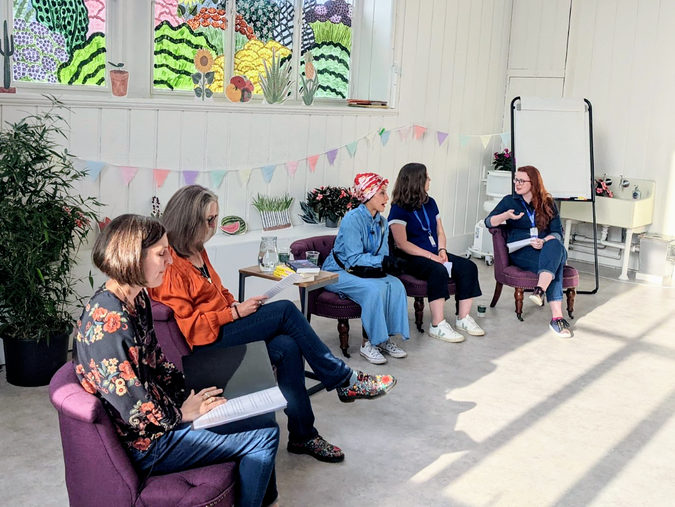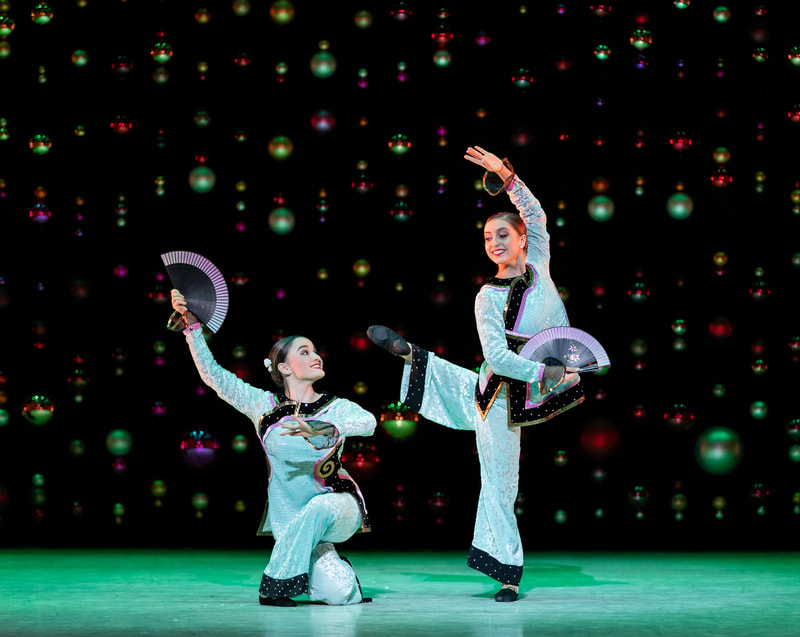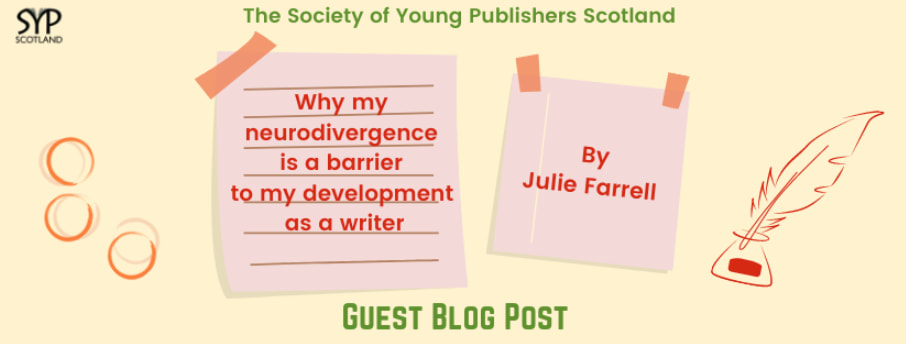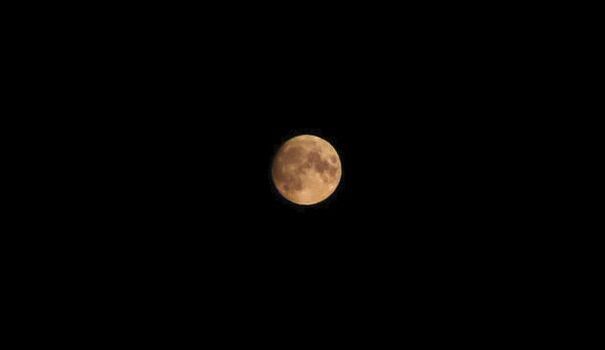 Left to right: Onie Tibbet, Yvonne Banham, Az dassu, Sally Polson, Julie Farrell. Image description: Onie has bobbed, brown hair, white skin, and is wearing a black top with orange flowers, and blue jeans. Yvonne is white with bobbed blonde hair, is wearing a rust-orange blouse, blue jeans and floral print brougues. Az has brown skin, is wearing a red and white headscarf, and a pale blue denim maxi-dress, with white trainers. Sally is white with a dark brown bob, wears a navy t-shirt and cropped trousers and white trainers. Julie is white with long, wavy red hair, round blue glasses and is wearing a dark blue denim jumpsuit and sparkly trainers. She is gesticulating to the panel. They sit in a white, wood-panelled room, on velvet purple chairs. Photo credit: Sarah Broadley How do you make children's literature more diverse and inclusive? Elizabeth Frattaroli reports on a SCBWI Scotland event at Edinburgh International Book Festival.
On the 28th of August Elizabeth Frattaroli attended a Scottish SCBWI event at the Edinburgh International Book Festival hosted by one of the current network organisers, Onie Tibbett, and former network organiser and soon to be debut author, Yvonne Banham, whose book, The Dark and Dangerous Gifts of Delores Mackenzie, will be published by Firefly next year. The panel was completed by A M Dassu, award winning author of Boy, Everywhere and Fight Back, and Director of Inclusive Minds, a unique organisation for people who are passionate about inclusion, diversity, equality, and accessibility in children’s literature; Julie Farrell, author, award winning poet and co-founder of The Inklusion Guide, ‘A kickass guide to making literature events accessible to deaf, disabled and neurodivergent people’, which had been launched at the book festival earlier that week (and can be downloaded online); and Sally Polson, Editorial Director at Floris Books, who has commissioned and edited books across many genres.
0 Comments
 Scots Whay Hae! Alistair Braidwood, Ever Dundas and Julie Farrell chat about Inklusion. Ever is a white woman with short bleached hair, glasses, and a black top, sitting on a gold bed with a red wall behind her. Alistair is a white man with silver hair and moustache, round glasses and a sand-coloured top. He has a large bookcase behind him. Julie is a white woman with long red hair, a green top, and a large bookcase behind her. There is a desk with pictures above it. The latest Scots Whay Hae! podcast is the first of three collaborations with the Edinburgh International Book Festival for this year's Festival. Ahead of their own event - Celebrating Inclusion (Thu 25 Aug 19:00 - 20:15) - Ali spoke to writers Ever Dundas and Julie Farrell to learn more about the event, and the Inklusion Guide, which they have created to help event organisers better understand accessibility for disabled writers, audience members, and others.
If you’re looking to bring that extra sparkle to this year's festivities then look no further than the Scottish Ballet’s recently reimagined Nutcracker. A feast for the eyes unmatched by any other production, this was the soul-food I'd been craving. It's been a tough couple of years, there's no getting away from it. The shadows in our lives have been bleak and pervasive, which for me made this event all the more vital, and the more vibrant. This is the best opportunity I can think of, to find that much needed light in the darkness we find ourselves in, literally and figuratively. A veritable smorgasbord of magic and movement, set against a glittering backdrop to an infamous score. As a chronically ill person, I’ve done very little socialising of late, and this was my first in-person show since before the pandemic. Times have changed again as a new wave washes over us – but for now, if you feel safe and you are able, and the show goes on – it’s a brilliant couple of hours of escapism. There's a little bit of personal history here, as to why in my humble opinion, this is the best ballet performance you could see. Let me paint a picture: the last, and only time, I've seen this performance was its inaugural reveal back in 2014. It was a magical time in my life as I was just back from Paris, newly engaged. I had joked with my partner since I was sixteen that the day he took me to the ballet would be the day I’d know he’d love me forever. On Christmas morning in our hotel room, he gave me a beautifully illustrated copy of the Nutcracker, with tickets to the Scottish Ballet tucked inside the front cover. This was a declaration. Later, on a deserted Pont des Arts, with Paris twinkling around us and the stars and moon above, he got down on one knee. The open box in his hand sparkled through my tears, and when I lifted my hand to get a proper look, the clock struck twelve and the Eiffel Tower burst into light over the Siene. You can imagine my pleasure when a couple of days later, the Scottish Ballet’s newly reimagined Nutcracker bloomed before my eyes in a kaleidoscopic twirl of sequin, sparkle and snowflakes. The sets and costumes in this contemporised reimagining are truly breath-taking. The curtains initially open to reveal a cheerful dance taking place in a traditional ballroom draped in wintry velvet, with two-toned silk dresses shimmering underneath. A heart-warming sight that I couldn’t help but grin at, both for the nostalgia depicted on stage and that of witnessing this grand production once again. As the mysterious Drosselmeyer calls the midnight moon into the star-strewn sky above a sleeping Clara, they reveal nothing short of a dream world – the world of the Nutcracker Prince – and all its myriad glorious characters. The company has some fresh new faces which was a delight to see, and all the dancers are exquisite in their execution, as I’ve come to expect. New this year, too, were costume and choreography changes for the Chinese and Arabian dances which was very welcome, reflecting the Scottish Ballet’s commitment to keeping abreast of diverse representation and inclusion within a stubbornly traditional industry. Also new is the depiction of Drosselmeyer by male and female dancers – a role which has traditionally only been performed by male dancers. It struck me as a vital reflection of the progressive changes we’ve seen since the pandemic hit us, and as a testament that the world can, and is, changing for the better. Tchaikovsky’s well-known score performed by the Scottish Ballet Orchestra and Peter Darrell’s choreography will certainly impress you. From the heart-stopping stand-off between the Nutcracker Prince and the Rat King, to the intricate Pas de deux of Cavalier and Sugar Plum fairy, there’s not a single note that isn’t perfectly co-ordinated with grace and poise on the stage.  Pas de deux of the Nutcracker Prince and the Sugar Plum fairy - photo by Andy Ross Pas de deux of the Nutcracker Prince and the Sugar Plum fairy - photo by Andy Ross As the music soared in triumphant crescendo of strings and harp, so did my heart. When the Prince caught the Sugar Plum fairy, finally, in that last crashing moment of brass, wind and drums, it was me leaping into the sky: uncaged, and freed from all the torment that has shadowed us. I cried. I remembered why we make art and why we should celebrate it. How joyful my heart, beating in time with that of the dancers, in the wonderful synchronicity offered by the thrill and the pulse of a live event. We are in this together. The tumultuous applause was for more than just the performance: it was for all of us, together, connecting, celebrating, and remembering the good of humanity. This said, the shift of arts events to a digital space has been a necessary one, and Scottish Ballet have taken strides in ensuring everyone is welcome to attend their performances. I've been grateful to participate from home when my disabilities have me unable to attend in person. I hope this hybrid approach and innovation becomes the norm, so that everyone can enjoy the magic . As is always the way at the turn of the season, when the darker nights draw in, my awareness turns inwards and I find myself introspecting on the lessons offered by the preceding months. I rarely post on my blog these days, I’ve been channelling much of my creative energy into other things. But with some exciting plans in motion, it feels like the right time for some retrospection.
And a little bit of truth. I'm not shy about the fact that authenticity is a number one priority in my life – the authentic self, experience and truth are what make me deeply happy. I wrote an essay about authenticity being the greatest human pursuit some years ago, and how a breakdown and subsequent ill health led me down a vital and affirming path of self-discovery. In the years since, I've spoken openly about my diagnoses, of Generalised anxiety disorder, fibromyalgia and Hypermobile Ehlers Danlos Syndrome. But the truth is I always felt like some piece of the puzzle was missing. Perhaps the largest part. The disabled community I've been privileged to be welcomed into within the writing community has not only been hugely supportive, encouraging and empathetic but also enlightening. It's here I first became fully aware and accepting of my pansexuality, my chronic illnesses and latterly my neurodivergence. I've always been different. "Odd" and "weird". I never minded it a bit. Even when I was bullied excessively throughout primary school and a little in high school (perhaps ostracised would be the more apt word choice at that point), I still held my head high in the security that I was simply being myself. And I liked me. It was in this community where I met Autistic people who were like me. People who challenged and disproved my ignorant notions of what it meant to be Autistic. People who feel the spectrum of emotions as keenly as I do, who cry when they see pain, who don't understand unkindness, manipulation and ill-treatment. People succeeding in life and work – particularly in the fields of their interests. People with degrees, PhDs and a wealth of life experience. There were a few key interactions, which really got me thinking deeply about the possibility I may be Autistic. It was a review that I did of a documentary-film about Autistic women that really drove the feeling home, however. (Watch it, it's beautiful). Females are more often termed 'high functioning' because we exhibit different behaviours to males, namely we mask our true behaviours and our confusion by expressing expertly learned behaviours. So we are often described as 'swans' because whilst we appear to be gliding along on the surface of things, we're kicking our legs furiously underneath just trying to stay afloat. Following this, I was invited to speak on a panel with Catriona Stewart, founder of the Scottish Women's Autism Network (SWAN), where Catriona told me she'd heard my story time and again from Autistic females. Misdiagnosis (fibromyalgia, generalised anxiety disorder) was common, and many people had to push for years before getting anywhere. I joined the Facebook group and found myself connecting with an incredible group of people all sharing tips, advice and similar stories. I asked for a referral, and got the letter saying the wait list for assessment was 2 years. I wrote in, I sent a 50-point list of traits, I explained how I believed much of what I struggle with (cognitive dysfunction, brain fog, memory issues, anxiety, dissociation, inability to focus on work whilst also focusing too long and too hard) was due to my being Autistic. Thankfully the SWAN group came through and someone recommended Number 6 charity in Edinburgh who have been carrying out assessments since the pandemic kicked off. I got my referral transferred and was attending my first assessment within two weeks. The process took a few weeks, there were several interviews, a phone interview with my husband, and a formal ADOS assessment. But my assessors were in no doubt, I am Autistic. And what's more, it was pretty clear to them within the first few minutes of meeting me. Cue the onslaught of memories of every traumatic life experience I've ever had, flooding over me with a renewed sting. Much of my life makes way more sense and my identification is a relief. I was never alone, the neurodivergent and Autistic community had my back, but still, I felt affirmed. Validated. I know who I am. And I am Autistic. Even now, it feels so strange to say. I wish I could have told it to the people I worked for, in my early days of trying to break into the publishing industry (from a background in Biomedicine). I wish I could have told the puzzled publisher why I struggled to focus on typing-up boring mail-outs, as she handed me a patronising bullet list of things I could try to achieve before lunchtime, or when she told me sweetly I might want to stick to being a bookseller and running events instead of moving into publishing. I wish I could have told the aggressive boss that her violent mood-swings only made me more prone to forgetting to ring things up on the till, or more likely to drop the tray of hot coffee. I wish that I could have told my first peer, the first person to ever take me on as a publishing intern, that yes, I did study Biomedicine, and yes, not only did I study it, I did in fact complete my degree. I wish I could have told her, that no, I was not 'a little puppy she was kicking in the face' when she told me about bad news in the world. Things she shared over email with friends, in an account she had me monitoring for submissions. I wish I could tell them I will rise above it, use it as fuel and motivation to keep going. And that it hurt. That even now, I still question my own intelligence and worth and merit, in every new interaction. Even when I know I have all these things in abundance. Logically, I know. But the voice whispers and makes us doubt. The ever present voice of ableism and ignorance. It's taken years of dedicated introspection, self-awareness, counselling and determination to get here. It's thanks to beautiful, empathetic, mutually respectful friendships, that I've been able to grow from my experiences. And thanks to my relationship with my husband, who I've been with since I was sixteen, and who has loved me and weathered the storms with me no matter what they bring. These experiences are painful and they have shaped me. It's my hope that others following behind me will not meet the same attitudes when they come to work in the publishing industry, and I'll be posting a follow-up blog to this one soon, which talks in more depth about the barriers I face as an Autistic writer. I will also be launching a long-standing project this coming week which I hope will go a long way to challenging stigma. perceptions and poor behaviours towards disabled people or people who are different, in the literature sector. For the first time, I am proudly, excitedly saying I am Autistic. I'm an Autistic writer, journalist and accessibility consultant. I went freelance when I couldn't hack the strain of the rat-race, about seven years ago, and five years ago I committed fully to being a writer. I am phenomenally proud to have written a Young-adult novel which has been shortlisted for two awards, and to have been mentored by an author I admire deeply. I am proud that I set up my own consultancy, advising literature organisations on accessibility. And now I'm launching a project with a dear friend (the incredibly talented author and fellow Crip, Ever Dundas) which we've been diligently working on since January (though we've been discussing it for years). I am proud that I got here, not despite my being Autistic, and not because of it – but because of the entrenched, systemic, ableist barriers I've overcome, every day. Because despite the toxic bullshit that society labels us with, throws at us, tries to make us believe, we always know who we are. I know who I am. And I’m not going anywhere. I was thrilled to be asked by the Society of Young Publishers Scotland to write a post for their blog about the barriers I face as a neruodivergent writer, and what publishing can do to help.
I wrote about my experience as a disabled writer, and how the pandemic and the resultant boom in accessibility, has impacted my career for the Society of Young Publishers 2021 conference blog.
This autumn I've been trying to tap my mind back into nature – I've always been one who feels governed by the patterns of the seasons, rather than the weeks, days, minutes and seconds of the industrious 9-5 drum. Of any given day I may feel a call to nature, and all I have to do is answer. The nature of the work I do means that I can stop at the drop of a hat to instead throw on my coat, grab my camera and head out the door to see what nature has in store for me. A little preparation means I can do this for a few days to a few weeks; my body and intuition always knows what I need, even before I do. Sometimes, it's just an overwhelming feeling, 'I must get out today… for I know I am going to find something.' Often this is when I have my most exciting ideas. The time in nature allows my brain to process sub-consciously whilst it's being fed by beautiful sights, sounds, smells and textures.
I am thrilled to share this podcast with you, having recorded it a few months ago now. I was invited to chat about living with chronic illness, along with Ever Dundas, by The Ampersand Project. We discussed the barriers faced by disabled writers, the lack of opportunity and support, and our fundamentally broken system.
The second part in this series about disabled and low-income access to writer development opportunities was originally published at WOW_CON, the online writing conference run by Write Mentor. It's with their permission that I'm sharing it here.
It's time to face an uncomfortable truth.
This blog post has been in the making since early this year and I'm so glad I can post it now, having found the perfect home for the second installment. It's directly informed by my experience as a disabled writer on low income, and it's my hope to raise awareness and create positive change by starting a dialogue about the barriers I face in developing my writing. Part Two: Creating Change, will be published this Sunday at WOWCON - the inaugural online writing conference run by Write Mentor. |
My latest writings, and thoughts on disability, mental health and young-adult lit. Archives
September 2022
|












 RSS Feed
RSS Feed